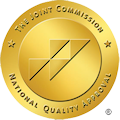
If you or someone you love is struggling with opioid addiction, you’ve likely heard about medication-assisted treatment. MAT treatment represents one of the most effective, evidence-based approaches to overcoming opioid use disorder. Understanding what to expect during MAT treatment can help you feel more confident as you take this important step toward recovery.
Understanding MAT Treatment
Medication-assisted treatment combines FDA-approved medications with behavioral therapies and counseling to provide comprehensive care for opioid use disorder. Unlike traditional abstinence-only approaches, MAT treatment addresses both the physical and psychological aspects of addiction through a whole-person approach.
The medications used in MAT treatment work by normalizing brain chemistry, blocking the euphoric effects of opioids, relieving physiological cravings, and normalizing body functions without the negative effects of the abused drug. This combination creates a stable foundation for sustainable recovery.
The Three Components of MAT Treatment
Effective MAT treatment involves three essential elements working together:
- Medication: FDA-approved medications form the foundation of MAT treatment. The three primary medications used are methadone, buprenorphine (often combined with naloxone in formulations like Suboxone), and naltrexone. Your medical team will work with you to determine which medication best fits your specific needs and circumstances.
- Counseling and Behavioral Therapies: Individual and group counseling sessions help you develop coping strategies, identify triggers, and work through underlying issues contributing to addiction. Evidence-based therapies like cognitive-behavioral therapy and motivational interviewing are often incorporated into your treatment plan.
- Support Services: Comprehensive MAT treatment includes case management, peer support groups, vocational services, and connections to community resources that support your overall recovery journey.
What Happens During Your First MAT Treatment Appointment
Your initial MAT treatment appointment typically begins with a comprehensive assessment. Your healthcare provider will review your substance use history, conduct a physical examination, discuss your treatment goals and preferences, and develop an individualized treatment plan. This thorough evaluation ensures your MAT treatment plan addresses your unique needs.
During this first visit, you’ll also receive education about the medication you’ll be taking, including how it works, potential side effects, and what to expect during the initial adjustment period. Your provider will answer all your questions and ensure you feel comfortable moving forward with treatment.
The Medication Induction Phase
The induction phase is the initial period when you begin taking medication as part of your MAT treatment. This phase requires careful monitoring to establish the right dosage for your body and needs. Most people begin experiencing relief from withdrawal symptoms and cravings within the first few days of starting medication.
Your healthcare team will schedule frequent check-ins during this phase to assess how you’re responding to the medication and make any necessary adjustments. This close monitoring ensures your comfort and safety as your body adjusts to MAT treatment.
Stabilization and Maintenance

Once you’ve found the optimal medication dosage, you’ll enter the stabilization phase of MAT treatment. During this period, withdrawal symptoms and cravings diminish significantly, allowing you to focus on other aspects of your recovery. You’ll continue attending counseling sessions and developing the skills and strategies needed for long-term success.
The maintenance phase of MAT treatment varies in length for each individual. Research shows that longer retention in MAT treatment leads to better outcomes, with programs achieving retention rates above 50% at 12 months considered successful. Some people benefit from remaining on medication for years, while others may eventually taper off with medical supervision when appropriate.
The Role of Counseling in MAT Treatment
While medication addresses the physical aspects of opioid addiction, counseling and behavioral therapies are equally crucial components of effective MAT treatment. Regular therapy sessions help you understand the psychological factors contributing to your substance use, develop healthy coping mechanisms for stress and triggers, build stronger relationships with family and friends, and address any co-occurring mental health conditions.
At California Addiction Treatment, we integrate evidence-based therapies into every MAT treatment plan. Our motivational interviewing approach helps you identify your personal motivations for change and overcome ambivalence about recovery.
Expected Outcomes and Success Rates
The effectiveness of MAT treatment is well-documented through extensive research. Studies demonstrate that MAT reduces the risk of fatal opioid overdose by up to 50%, significantly decreasing the likelihood of devastating outcomes. This substantial reduction in mortality risk makes MAT treatment a lifesaving intervention for individuals with opioid use disorder.
Additionally, research shows patients in MAT treatment experience a 60% reduction in relapse rates within the first year, dramatically improving long-term recovery outcomes compared to abstinence-only approaches. These impressive results highlight why MAT treatment has become the gold standard for treating opioid use disorder.
Beyond preventing overdose and relapse, MAT treatment helps you rebuild your life in meaningful ways. People engaged in MAT treatment often experience improved employment stability, better physical and mental health, restored family relationships, decreased criminal activity, and overall enhanced quality of life.
Common Questions and Concerns About MAT Treatment
Many people have questions or concerns when considering MAT treatment. One common worry is whether MAT treatment simply replaces one addiction with another. The answer is no. The medications used in MAT treatment are taken as prescribed, do not produce euphoria, and help normalize brain chemistry rather than creating a new dependency.
Another frequent question concerns the duration of MAT treatment. There’s no predetermined timeline for MAT treatment. Research clearly shows that longer-term treatment produces better outcomes, and many people benefit from remaining on medication for extended periods. Your treatment team will work with you to determine the appropriate duration based on your progress and individual circumstances.
Some individuals worry about potential side effects from MAT medications. While side effects can occur, they’re typically mild and manageable. Common side effects may include constipation, nausea, headaches, or drowsiness, particularly during the initial adjustment period. Your healthcare provider will monitor you closely and can adjust your medication if side effects become problematic.
Dual Diagnosis Treatment and MAT
Many individuals with opioid use disorder also struggle with co-occurring mental health conditions such as depression, anxiety, PTSD, or bipolar disorder. This combination is known as dual diagnosis, and it requires specialized treatment that addresses both conditions simultaneously.
California Addiction Treatment specializes in dual diagnosis treatment that integrates MAT with mental health care. Our comprehensive approach ensures all aspects of your health receive appropriate attention, significantly improving your chances of sustained recovery. Research indicates that integrated treatment for dual diagnosis leads to better engagement and outcomes compared to treating addiction and mental health issues separately.
The Importance of Medical Supervision
MAT treatment requires ongoing medical supervision to ensure safety and effectiveness. Never attempt to obtain or use these medications without proper medical oversight. Street versions of MAT medications carry significant risks, including unknown potency, dangerous contaminants, lack of medical monitoring, and potential legal consequences.
Working with qualified healthcare providers ensures you receive pharmaceutical-grade medication, appropriate dosing tailored to your needs, regular health monitoring, and coordinated care that addresses all aspects of your recovery.
Life After Starting MAT Treatment
As you progress through MAT treatment, you’ll likely notice positive changes in various areas of your life. Physical symptoms improve as your body heals from the effects of opioid abuse. Mental clarity increases as you’re no longer consumed by cravings and the cycle of using. Relationships begin to mend as you become more present and reliable. Opportunities open up for education, employment, and personal growth.
Many people describe MAT treatment as giving them their life back. The stability provided by medication, combined with therapy and support services, creates space for you to rediscover who you are beyond addiction and build the life you want to live.
Take the First Step Toward Recovery
If you’re ready to learn more about how MAT treatment can support your recovery journey, California Addiction Treatment is here to help. Our medication-assisted treatment program combines FDA-approved medications with evidence-based therapies and compassionate care.
Our experienced medical team understands the challenges of opioid addiction and will work with you to develop an individualized treatment plan that addresses your unique needs. We offer comprehensive services, including medical detox, residential treatment, and ongoing support to help you achieve lasting recovery.
Don’t let another day pass living under the weight of opioid addiction. Contact us today to speak with one of our caring admissions specialists. We’ll answer your questions, verify your insurance coverage, and help you take the first step toward a healthier, more fulfilling life. Recovery is possible with the right support, and we’re here to walk alongside you every step of the way.




